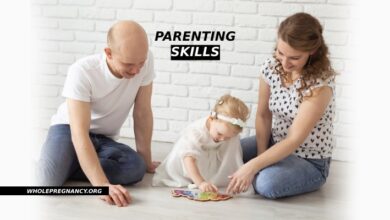Does Your Parenting Style Really Matter?

Does Your Parenting Style Really Matter?
There are many influences on children today, among them parents, family, school, religious organizations, and media. Parents might not have total control over all the other outside influences, but they can exert much influence on their children mainly through their parenting style. Having an understanding of the different parenting styles and the skills associated with them will provide a foundation to successfully guide your relationship with your child and enjoy your role as a parent.
Styles of parenting refer to the way in which a parent manages children in terms of control, nurture, and communication. Why is it important? The parent’s style strongly affects the parent-child relationship. If parents build a strong positive relationship with their children, they will be more influential in their children’s decisions and values. Each day as a parent brings a variety of challenges for you to handle. How can you best guide your child? How will you react? Will you make the situation better or worse for your child and for yourself? This is extremely important in the tween and teen years in order to reduce risky behaviors, such as smoking, using drugs and alcohol, and engaging in sexual activities.
A useful classification of four basic parenting styles is: authoritarian, permissive, neglectful, and authoritative. Each style affects children’s personality traits and behaviors. Let’s take a look at each style more closely.
Authoritarian style
The authoritarian style displays high demand and high control, with very little warmth and nurturance. It is often characterized as a dictator. A typical statement would be, “You’re late to bed, with no dinner!” Children raised predominantly in this style tend to be rebellious outside of the family or have very little decision-making skills.
Permissive Parenting Style
The permissive style is one showing low demand and low control, with high warmth and nurturance. It can be characterized by the symbol of a doormat or marshmallow. An example from a permissive parent is, “I wish you would come home on time.” As a result, children raised predominantly in this style tend to challenge the limits and are less respectful and responsible.
The Neglectful Parenting Style
The neglectful parenting style is one showing low demand and control and low warmth and nurturance. An empty bag can symbolize this style. An example from a neglectful parent is, “I am going to eat my own dinner, take care of yourself.” Children raised predominantly in this style have few social skills and are often cold and harsh to get their way.
The authoritative parenting style
The authoritative parenting style is one of high demand and high control coupled with high warmth and nurturance. It could be characterized by a flexible watchband, which is flexible yet firm enough to hold the watch. A typical statement could be “You’re late again, how can we work this out together? Remember you agreed to be on time.” Children raised predominantly in this style have fewer behavior problems, good self-esteem, confidence, and social skills, and in the teen years, are more likely to listen to their parents’ advice.
Each of us tends to use one style more than the others. In any one day, parents can use each of the four styles, depending on the situation, individual patience, and energy level, and the child’s mood and behavior. Research has shown that the most successful parents draw from all four styles, but use mostly the authoritative style. The key point is to try to be more aware of your dominant style and move towards the more balanced authoritative style. The result would be a parent who is both firm in setting limits and kind in the delivery of those limits.
The Authoritative Parenting Style
The parent with an authoritative parenting style uses some of the following methods:
- Maintaining an atmosphere of mutual respect
- Setting rules and limits and giving reasons for each
- Giving choices
- Focusing on the positive
- Including the child in problem-solving
- Providing encouragement
- Negotiating
- Conducting family meetings
Here are some tips to practice the skills above:
Mutual respect
To achieve an atmosphere of mutual respect, try to remember to treat your child with dignity. A tip would be to try to remember to talk to your child as you would to your best friend. Of course, this won’t always happen, but more often than not, it will be a reminder. This will avoid the pitfalls of nagging, judging, name-calling, and a negative tone of voice.
In order to set rules and limits, parents need to remember to check the child’s age and corresponding developmental level in order to have realistic expectations. The rules and limits will then be more reasonable and respectful to encourage the child’s cooperation.
Choices and Options
As the child gets older, a parent can give choices that are appropriate for each child’s age and increase the level of responsibility as the child grows up. For example, a parent could give a four-year-old the choice of eating two different vegetables. You can give your ten-year-old the choice to do their practice of an instrument before or after dinner. A thirteen-year-old could be given the choice to help shop or cook during the week.
Positive Reinforcement
Focusing on the positive reinforces positive behavior. A parent that acknowledges that a child is working hard on their homework is more inclined to get more positive effort from the child. The remainder is for parents to avoid saying things that are negative or emphasizing the mistakes, which only causes resentment in the child.
Problem Solving
Including the child in the problem solving strengthens not only the relationship between parent and child but also strengthens the child’s development. From three years old on, a parent can ask, “Can you think of a better way?” The child might not always have the perfect answer but is learning to brainstorm and think of solutions. Establishing a calm atmosphere before problem-solving is essential for both parent and child.
Encouragement
Parents can either encourage or discourage children. Encouragement is a powerful motivator and has been shown to also change behavior in children. Practice making statements such as, “I know you’re getting tired of cleaning your room, but let’s set the timer for ten more minutes and then take a break.” “I know you are behind in your reading assignment, let’s make a plan over the next week to get you back on schedule.” See for yourself over time what the results will produce by practicing saying 5 encouraging statements to each child every day. Dr. Rudolph Dreikurs, a famous psychiatrist and educator, said “Children need encouragement like a plant needs water.”
Negotiation
Negotiating is an important skill to create a mutually beneficial outcome to a problem, conflict, or opportunity. It requires both parent and child to first agree on the outcome. Secondly, in an environment of mutual respect, both parent and child engage in a give and take the discussion to arrive at a mutually acceptable way to reach the outcome while both parties preserve strongly held values and beliefs. Thirdly, test the agreement over a designated time period, to evaluate the results and adapt the agreement.
For example, a thirteen-year-old is invited to his first co-ed birthday party from 7-10 pm. The host friend asked him to come and join a smaller group beginning at 2 pm. The parents of the invited child were concerned that this timeframe, 2-10 pm, was too long and would probably lack supervision over the number of hours.
At first, the parents prohibited attending the early session. (authoritarian style) This resulted in a conflict, which arose in part because the child was flattered to get invited to the more exclusive early session. After reevaluating the situation, the parents engaged with the child in negotiation, which resulted in a mutually acceptable solution. All agreed that the child could attend any four hours within 2–10 pm. The child chose to attend from 6-10 pm. Afterward, the parents and child evaluated the choice. The child stated that he enjoyed going early, but that four hours was enough.
Family meetings
Conducting family meetings is a scheduled format for parents and children to focus on exchanging information, resolving problems, or planning fun outings. Pick a time during the week that is convenient to everyone. Keep it short around 10-20 minutes. Many families bring their calendars and ask each member to see what is occurring that week. In a more formal version, each person can rotate the roles of leader, note-taker, or timer, developing their team skills. You can set up an agenda in advance to assure that everyone’s concerns are addressed.
In conclusion, awareness of these various parenting styles and their effects on children is a first step in moving toward a more balanced authoritative parenting style. Once you made your decision there are some simple yet effective methods that you will find have surprising results in the daily interactions with your children.




